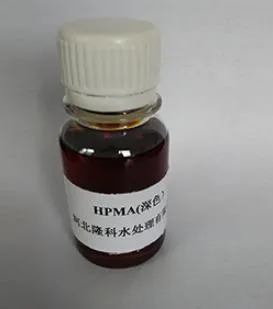Scale Inhibitor Explained: How to Protect Your System from Limescale and Hard Water Damage
In water systems—from industrial boilers and cooling towers to household appliances—scale is a persistent enemy. It reduces efficiency, accelerates wear, and can lead to costly equipment failure. A properly selected स्केल अवरोधक or limescale inhibitor is one of the most effective ways to combat this problem, especially in regions with hard water.
If you're managing a water treatment system, building a product formulation, or simply maintaining clean pipes and heat exchangers, understanding how a water scale inhibitor works—and which type suits your needs—is crucial.

What Is Scale, and Why Is It a Problem?
Scale refers to the mineral buildup that forms when hard water (containing calcium, magnesium, or silica) is heated or experiences pressure changes. Common types include:
Calcium carbonate (CaCO₃) – The most common cause of limescale
Calcium sulfate (CaSO₄) – Harder and more difficult to remove
Silica-based scale – Resistant to traditional acid cleaning
Barium and strontium sulfates – Found in oilfield and geothermal operations
Even a 1 mm layer of scale on a heat exchanger can reduce thermal efficiency by more than 10%, raising energy costs and causing system stress.
What Is a Scale Inhibitor?
A स्केल अवरोधक is a chemical or mechanical solution that prevents or minimizes the formation of scale in water systems. It works by interfering with the crystallization process of mineral salts, either by:
Binding with scale-forming ions (e.g., Ca²⁺, Mg²⁺)
Modifying the shape of growing crystals (so they cannot adhere to surfaces)
Keeping particles suspended so they can be flushed out
In short, scale inhibitors don’t remove scale—they stop it from forming in the first place.
What Is a Limescale Inhibitor?
A limescale inhibitor (also called a water scale inhibitor) is a specific type of scale inhibitor targeted at calcium carbonate, the mineral most responsible for white, chalky deposits in:
Boilers
Kettles
Dishwashers
Water heaters
Pipes and taps
Limescale inhibitors are widely used in both residential and commercial water systems, especially in hard water regions.
Types of Scale Inhibitors
There are several types of स्केल अवरोधकहरू, based on chemistry and application. Each has its strengths and limitations:
1. Phosphonate-Based Inhibitors
Example: HEDP, ATMP, PBTC
Excellent for calcium carbonate and calcium sulfate scale
Common in industrial cooling and boiler systems
Highly effective, but phosphorus content can impact wastewater
2. Polycarboxylic Acids
Disperse particles and prevent scale adhesion
Often used in RO systems and food-grade formulations
Environmentally preferred in phosphorus-restricted areas
3. Polyphosphates
Used in residential and municipal water treatment
Often added via cartridge or dosing systems
Less stable at high temperatures
4. Silicate and Zinc-Based Compounds
Provide corrosion protection and scale control
Used in closed-loop systems
5. Magnetic or Electronic Descalers (mechanical option)
Installed on pipes to alter crystal formation using magnets or frequency
Effectiveness is debated—less reliable in high-hardness, high-flow systems
Key Applications of Water Scale Inhibitors
Water scale inhibitors are used across multiple industries and equipment types:
Cooling towers – Reduce scale and biofouling, prevent clogging
Boiler feedwater – Maintain heat transfer and prevent tube failure
Reverse osmosis (RO) systems – Protect membranes from fouling
Geothermal systems – Prevent mineral scaling at high temperatures
HVAC systems – Maintain coil efficiency and reduce maintenance
Residential water systems – Extend appliance lifespan and improve water quality
In each case, scale control ensures better performance, lower maintenance, and longer equipment life.
Choosing the Right Scale Inhibitor
When selecting a limescale inhibitor or water scale inhibitor, consider the following:
Water analysis – Test for hardness (Ca²⁺, Mg²⁺), pH, silica, sulfate content
System type – Open-loop, closed-loop, high temperature, RO membrane?
Chemical compatibility – Especially important with existing treatments (e.g., chlorine, biocides)
Environmental regulations – Phosphorus limits may restrict certain chemistries
Dosage method – Continuous dosing, cartridge, or periodic treatment?
It’s always recommended to conduct jar tests or pilot studies before full implementation.
Where to Find Scale Inhibitors for Sale
There are hundreds of scale inhibitors for sale, but product quality and support vary. When sourcing, look for:
Technical data sheets (TDS) and safety data (SDS)
Proven efficacy for your application (field data or lab results)
Custom formulations for high-performance systems
Local support or engineering consultation
Compliance with local water safety and discharge standards
Reputable suppliers often offer both off-the-shelf and customized solutions, including blends for scale, corrosion, and microbial control.
Scale Inhibitor FAQs
Q1: What's the difference between a water softener and a scale inhibitor?
A: A water softener removes hardness minerals through ion exchange. A scale inhibitor prevents these minerals from depositing without removing them.
Q2: Can scale inhibitors remove existing scale?
A: No. They prevent future formation. For removal, use acid cleaning or a scale remover product first.
Q3: How do I know if I need a limescale inhibitor?
A: If you operate in a hard water area and see scale buildup on fixtures, heating elements, or filters, it’s time to use a limescale inhibitor.
Q4: Are scale inhibitors safe for drinking water systems?
A: Yes—many products (especially polyphosphates and food-grade polycarboxylates) are NSF or WRAS certified for potable water.
Q5: How long does a limescale inhibitor cartridge last?
A: Depending on water usage and hardness, cartridges typically last 3–12 months. Always follow manufacturer recommendations.
-
Understanding Polycarboxylic Acids: Properties, Applications, and Future PotentialसमाचारJul.28,2025
-
Scale Inhibitor Explained: How to Protect Your System from Limescale and Hard Water DamageसमाचारJul.28,2025
-
Scale and Corrosion Inhibitors: Essential Chemicals for Industrial Water System ProtectionसमाचारJul.28,2025
-
Polyaspartic Acid: A Biodegradable Polymer for Sustainable ChemistryसमाचारJul.28,2025
-
Isothiazolinones: A Versatile Antimicrobial Class with Industrial Power and Regulatory ChallengesसमाचारJul.28,2025
-
A Deep Dive into 2-Phosphonobutane-1,2,4-Tricarboxylic Acid (PBTC)समाचारJul.28,2025





